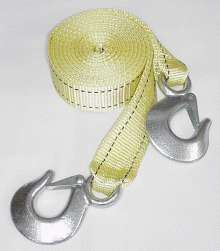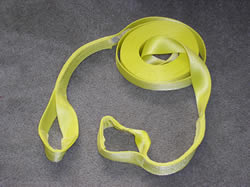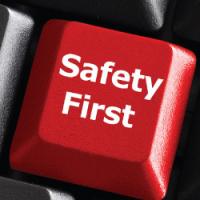- Posts: 350
- Thank you received: 11
Tow And Recovery Straps
- Safety Toolbox Talk Webmaster
-
 Topic Author
Topic Author - Offline
- Administrator
-

Do you know there is a difference between a tow strap and a recovery strap?
One is used to tow other vehicles and the other is used to pull out or “recover” vehicles from ditches, etc and they are quite different and quite unique.
Until I read the following article on a fatal incident in Cincinnati, I had no idea there was a difference:
Cincinnati Enquirer – May 17, 2016
Fatima Hussein
A man was killed Tuesday in an accident at a Miami Township landfill.
Emergency crews were called to a construction accident that occurred at Miami Fort Station Lawrenceburg Landfill at 2602 Lawrenceburg Road at 7:45 pm.
A Komat'su D65 Bulldozer was being operated by Jason Jolly, 38 from Ewing, Kentucky, who was attempting to pull an excavator out of a pit with a tow strap, according to the Hamilton County Sheriff's Office.
The tow strap broke, causing the rope to wrap around the bulldozer and strike Jolly.
Miami Township Fire Department and University Of Cincinnati Air Care were called to the scene where Jolly was pronounced dead. This incident remains under investigation by the Hamilton County Sheriff's Traffic Safety Unit.
The right recovery straps and how to use them can make the difference if you can pull your vehicle out safely or if you have to wait on a tow truck. A high quality strap without hooks attached to it is the strap you want to use for getting a vehicle unstuck.

The strap to the left is called a "tow" strap. The main reason not to use this for recovery is simple. If the recovery strap or your recovery hardware breaks, it's not safe to have a metal hook flying off at speeds in excess of 100 mph. Many people like in the article above have been killed or seriously injured by using these straps incorrectly. These straps will not stretch because they are made for towing, not recovery.
 Recovery straps are flat with sewn loops and no hooks. They are nylon, not polypropylene or Dacron or chain. Because the straps are made of Nylon, they stretch. They are safer than chains, easier to use, and not nearly as heavy.
Recovery straps are flat with sewn loops and no hooks. They are nylon, not polypropylene or Dacron or chain. Because the straps are made of Nylon, they stretch. They are safer than chains, easier to use, and not nearly as heavy.
Tips for Recovery Strap Use
- Before ever using the strap, make sure it is in good condition (no cuts, frays, or broken stitching.)
- Make sure the hardware being used is free of defects and rust. This includes your tow hooks or front hitch and the hardware on the other vehicle. If possible, the recovering vehicle should place the recovery strap to its rear end, which would be the safest place if the strap happens to break.
- You may be able to wrap the strap around a hitch, but I would not put it IN the hitch.
- Some older cars actually have tow hooks, but if not you must use your own judgment.
- Never attach a recovery strap to a vehicles bumpers, axles, suspension, steering rods, or a trailer hitch ball. The attach points must be to a secure place on the vehicles frame. Do not place the recovery strap on another vehicle in a way that it may be cut.
- Never, ever, attach a recovery strap to another vehicle with a knot. You should pass one end of the strap through the loop at the other end of the strap to secure it on.
- To help protect the strap from tears, make sure all logs and large rocks are removed from the recovery path. Everyone should stand clear of the recovery strap when it is in use.
- When pulling the vehicle out, drive very slowly. Sudden tugs may lead to damage to either of the vehicles or the strap.
- Once the vehicle is safely removed, inspect your recovery strap and hardware and hit the road!
Please Log in or Create an account to join the conversation.
